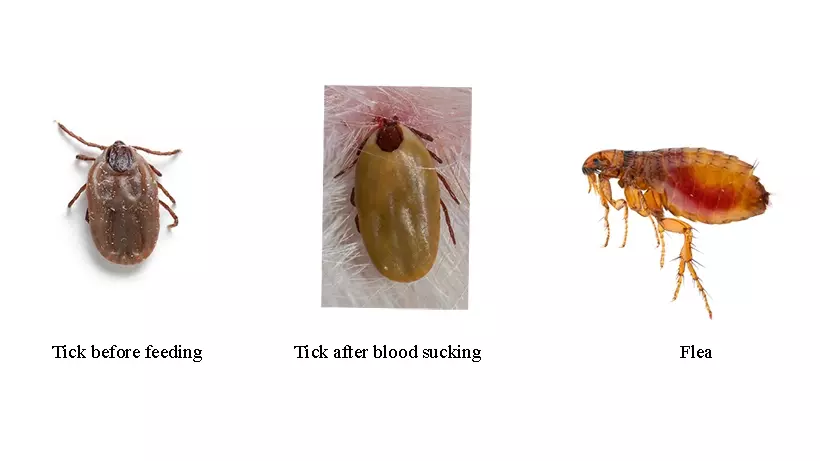Ticks and Fleas Infestation in Dogs: Causes, Management, Prevention, and More
Introduction
Ticks and Fleas Infestation in Dogs: Ticks and fleas are unwelcome guests that can infest your beloved canine companion, causing discomfort, health issues, and, in some cases, even serious diseases. Understanding the causes, effective management strategies, and prevention methods is crucial for ensuring your dog’s well-being. In this blog, we’ll dive deep into the world of ticks and fleas, exploring the reasons behind infestations, how to manage them, and important preventive measures to keep your furry friend pest-free.
Causes of Ticks and Fleas Infestation in Dogs
- Outdoor Exposure: Dogs that spend time outdoors, especially in grassy or wooded areas, are at a higher risk of encountering ticks and fleas.
- Contact with Infested Animals: Close contact with infested animals, such as other dogs or wildlife, can lead to ticks and fleas hitching a ride onto your dog.
- Poor Grooming: Dogs with long or thick fur may be more susceptible to infestations as ticks and fleas can hide easily.
- Warmer Seasons: Ticks and fleas are more active during warmer months, making dogs more vulnerable during spring and summer.
Management of Ticks and Fleas Infestation
- Consult a Veterinarian: If your dog has a tick or flea infestation, consult your vet for guidance on appropriate treatments. They may recommend topical or oral medications.
- Tick Removal: Use fine-tipped tweezers to carefully remove ticks from your dog’s skin. Grasp the tick as close to the skin’s surface as possible and pull upward with steady, even pressure.
- Flea Control: Use flea control products like shampoos, collars, sprays, or spot-on treatments as recommended by your vet.
- Home Cleaning: Wash your dog’s bedding, toys, and living area regularly. Vacuum your home to remove flea eggs and larvae.

Prevention of Ticks and Fleas
- Regular Grooming: Brush and groom your dog regularly, especially if they have a long coat, to check for and remove ticks and fleas promptly.
- Tick and Flea Preventatives: Use tick and flea preventatives recommended by your vet, such as monthly topical treatments or oral medications.
- Environmental Control: Keep your yard tidy by mowing the grass and removing debris. Consider using pet-safe yard treatments.
- Avoiding Infested Areas: Limit your dog’s exposure to high-risk areas like tall grass and dense woods.
Additional Points
- Health Risks: Ticks can transmit diseases like Lyme disease and Rocky Mountain spotted fever, while fleas can cause allergies, anemia, and tapeworm infestations in dogs.
- Early Detection: Regularly check your dog for ticks and fleas, paying close attention to areas like the ears, neck, and between the toes.
- Vaccination: In regions with a high risk of tick-borne diseases, consider discussing vaccination options with your vet.
- Natural Remedies: Some dog owners prefer natural remedies like essential oils and herbal collars. Consult your vet before using these methods to ensure they are safe and effective.
Conclusion
Ticks and fleas can pose a significant threat to your dog’s health and comfort, but with the right knowledge and proactive measures, you can keep these pests at bay. Effective management, regular prevention, and close monitoring of your furry friend are essential for their well-being. By following the advice outlined in this blog, you can help ensure your dog enjoys a happy, pest-free life.
